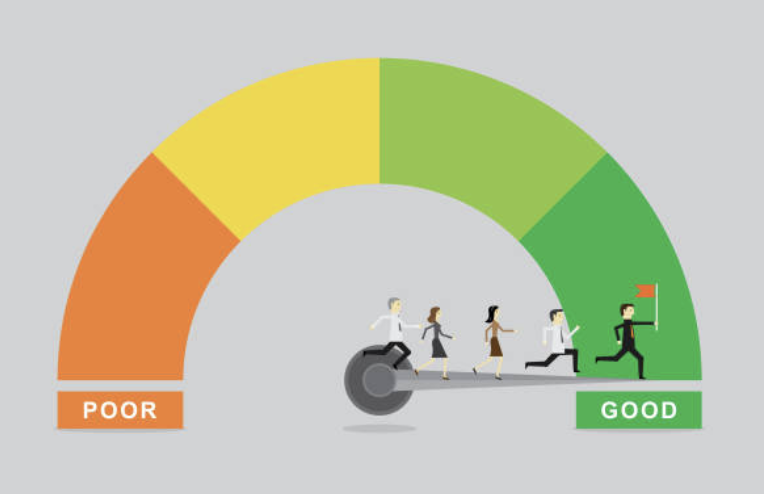
Larissa Barlow
Mar 31, 2022 17:01
Without having to do anything, systematic investing allows people to invest a certain amount each month. It is an excellent approach to accumulating wealth because you're not only investing daily, but money is also compounding over time.
Similarly, systematic selling is an easy way to diversify one's portfolio while generating revenue.

A rules-based approach to investment management is known as systematic investing. Rather than making individual investment decisions, systematic investment managers look for trading principles that can be beneficial when applied consistently to financial markets.
The index tracker is perhaps the most well-known systematic investment approach, in which positions are adjusted every quarter based on the index's inclusion criteria. Systematic investment managers employ a more dynamic and diversified strategy, employing numerous trading rules across over 100 markets.
Discretionary Investing is a time-tested strategy that relies on the knowledge and skill of a fund manager, investment advisor, or individual investor to evaluate a small number of securities and determine which one has the best chance of producing profits and appreciating in the future.
Because an individual can easily be overwhelmed by the massive amount of data available from the different aspects of just one publicly traded firm, the number of companies considered in a Discretionary investment technique must be relatively limited. When comparing 5, 10, or 20 similar organizations, each with their data set to evaluate, the work soon becomes overwhelming, decision-making slows to a crawl, and confusion typically results. There are numerous types of data to assess, and the investor, advisor, or fund manager must consider dozens of metrics in real-time.
Systematic Investing (also known as quantitative investing, algorithmic investing, data-driven investing, or rules-based investing) is a style of investing. The investor uses computer models to select investments in an automatic and repeatable manner. These systems examine a wide range of assets (including ETFs) and, in the case of our models, use complex composites of uncorrelated variables, algorithms, and ranking systems to make ETF selection and risk assessment judgments.
The difficulty with a Discretionary Investing strategy is that it relies on an investor's or advisor's experience and judgment to determine which assets are best for various situations. Because investors did not have access to affordable computer capabilities before the early 1980s, the Discretionary approach was their only option - and because it was so deeply established in the culture, it is still the way the majority of investments are made today. That position, however, is fast changing as investors shift large sums of money from active, discretionary stock selection to Passive and Systematic Investment.
The fact that mutual fund managers, who have traditionally made decisions regarding the great majority of investors' assets for the previous 100 years, are, for the most part, discretionary investors is one reason Discretionary Investing has lasted much past its prime. The sole difference between one mutual fund manager and another is their actual stock-picking track record, as these massive businesses ($17 trillion) are notoriously reluctant to change.
This group of professional advisors' track record is highly dismal. For example, after ten years, 85 percent of significant fund managers underperform their benchmark (often the S&P 500), and after fifteen years, 92 percent of managers underperform.
These well-paid (but failing) fund managers have no desire to give up their 'edge' in favor of a low-cost, potentially superior quantitative computer software. On the other hand, discretionary investors face a tremendous amount of work because they must constantly monitor financial markets and investment-related news, mentally juggle thousands of potential factors that could affect their investments and make significant decisions involving billions of dollars. There is a great deal of anxiety involved - and this statement is true for both pros and individual investors.
Discretionary investors must thoroughly understand how various factors will affect each company in their portfolio and then make the best estimate of the best modifications to their holdings to fulfill their objectives when market conditions change. Most crucially, a discretionary investor/manager depends on their judgment to choose the positions and market exposure of the portfolio.
Of course, judgments are subjective decisions; "one man's garbage is another man's gold," as the saying goes, and what works for one investor might not work for another. Even the most committed investor/fund manager might become overwhelmed by the vast quantity of knowledge and the number of unpleasant decisions required to maintain a tiny discretionary portfolio.
A systematic investment plan (SIP) is a type of investing strategy in which individuals invest in a trading account, a mutual fund, or a retirement account such as a 401(k) (k). SIPs enable investors to save more often with less money while still benefiting from the long-term benefits of dollar-cost averaging (DCA). A DCA investor acquires an investment with periodic equal transfers of monies in order to gradually build wealth or a portfolio.
A systematic investment plan entails putting money into the same security regularly.
A SIP usually involves automatic withdrawals from the funding account and may need the investor to commit for a more extended period.
Dollar-cost averaging is the foundation of SIPs.
SIPs are available from most brokerages and mutual fund companies.
Through mutual funds and other investment companies, investors can choose from several investment options, including systematic investment programs. SIPs allow investors to invest minor amounts of money over time rather than making huge lump sum investments. The preponderance of SIPs requires recurring contributions to the plans on a weekly, monthly, or quarterly basis.
Systematic investment is a simple notion. It is based on the regular and periodic acquisition of shares or units of securities of a fund or other investment. Dollar-cost averaging is the practice of purchasing the same fixed dollar amount of a deposit on a regular basis regardless of its price. As a result, shares are acquired at varying prices and in varying quantities—many plans permit you to specify a certain amount of shares to purchase. Due to the fact that the initial investment amount is frequently fixed and unaffected by unit or share prices, an investor purchases fewer shares as unit prices rise and more shares as prices decline.
SIPs are called passive investments since they are invested regardless of their performance. That is why it is critical to maintaining track of the money you invest in SIP. If you have reached a certain amount or are approaching retirement, you may wish to rethink your investment objectives. By switching to an actively managed strategy or investment, you may be able to accelerate your money grow even further. However, consulting a financial counselor or specialist to determine the best course of action is always a good idea.
Along with SIPs, many investors use the earnings of their investments to purchase additional shares of the same security via a dividend reinvestment plan (DRIP). Dividend reinvesting stockholders can use their dividends to purchase more shares or fractions of shares in publicly traded firms. Rather than paying the investor a quarterly dividend, the company, transfer agent, or brokerage firm uses the funds to purchase additional stock in the investor's name. Dividend reinvestment plans are likewise automatic—when an investor opens an account or purchases stock, they specify how dividends should be handled—and they enable owners to invest variable amounts in a company over time.
DRIPs administered by a business are commission-free, and there is no obligation for the transaction to be facilitated by a broker. Certain DRIPs allow for cash purchases of additional shares directly from the corporation at a 1% to 10% discount with no fees. Due to DRIPs' flexibility, investors can invest small or large sums of money, depending on their financial situation.
SIPs offer several advantages to investors. The key advantage is that once you've decided on the amount and frequency of your investments, there's not much else to do. Because many SIPs are automatically financed, you simply need to ensure that the funding account has adequate funds to match your contributions. It also allows you to withdraw a modest amount at a time, so you don't have to deal with the consequences of removing a large quantity.
There isn't much feeling involved because you're utilizing DCA, which reduces some of the risk and uncertainty associated with other assets such as equities and bonds. People will also incorporate some financial discipline into your life because it demands a set amount at regular periods.
Formal systematic investment plans have several restrictions, even though they might assist an investor in maintaining a consistent savings program. For instance, they frequently necessitate a long-term commitment, which could take anything from ten to twenty-five years. At the same time, investors are permitted to exit the plan before the expiration date. They may be subject to significant sales charges—up to 50% of the initial investment if done within the first year. If you don't make a payment on time, your plan will be terminated.
Establishing systematic investment planning might often be costly, and a charge for creation and sales can be as much as half of the first year's investment. Investors should also be aware of mutual fund costs and custodial and service fees if they apply.
We'll go through the primary advantages of taking a systematic approach to investing. A systematic approach has several key benefits, including the scalability to support with a consistent approach twenty-four hours a day across a global portfolio of securities; the implementation of consistent risk management at the stake, asset class, and portfolio level; and the scientific rigor that might be committed to the continual improvement of the main investing strategy.
Academic finance was slow to recognize the link between investor psychology and financial market behavior until the dot-com bubble. The topic of behavioral finance, on the other hand, is already well-established, with two critical areas of interest in a discussion of systematic investment. First, there is already a substantial body of theoretical and empirical research demonstrating how difficult it is for discretionary investors to consistently make reliable forecasts and risk allocation decisions. Second, the impact of psychological biases on financial markets and the potential for systematic investors is now recognized.
When used at scale, a systematic investment method provides significant extra benefits in implementation. Like other large systematic managers, Aspect may trade globally and work around the clock. A typical futures system can trade over 100 assets on numerous exchanges worldwide, while a systematic equities trading approach can track and trade thousands of stocks. Because all decision-making and investment processes are automated, new information processing, risk monitoring, signal production, and trade execution can be done in real-time.
A systematic investment method also allows for significant innovation in risk management, which may be built into the strategy rather than added on as an afterthought. An organized manager will typically operate at a specific level of portfolio risk, although some managers will allow the risk level to fluctuate within a target range.
Short-term volatility may be forecasted very well using statistical approaches. As a result, systematic managers can keep realized asset-level risk within a restricted range. With the addition of correlation projections, the portfolio can be built using rigorous statistical approaches.
A systematic manager will often start by creating risk projections for the various markets in the portfolio and estimating the correlation between multiple assets. These estimates are combined with the signals given by the trading models to create the portfolio.
The systematic approach permits rigid boundaries to be defined and monitored to control risks and exposures and relies on scientific methods to target volatility. For example, burdensome restrictions for volatility, Value at Risk, and leverage could be imposed at the asset, asset class, and portfolio level. Position sizes can be automatically capped or reduced whenever certain limits are met.
A growing body of research compares the success of systematic and discretionary investing strategies. So far, the study suggests that systematic managers outlive discretionary managers, create higher returns, and outperform them when it comes to market timing.
Systematic CTAs outlast discretionary CTAs, according to new research from Imperial College London's Julia Arnold and Paolo Zaffaroni. CTAs from the BarclayHedge database is divided into periodic and discretionary sub-samples by the authors. They discovered that systematic CTAs have a twelve-year average life span, compared to eight years for the middle discretionary manager.
The performance evidence is also consistent. Another report from Imperial College London finds that performance is best for more prominent systematic CTAs. This discovery backs up our earlier discussion about the advantages of scalability and trading twenty-four hours a day provided by a scaled-up routine investment procedure. Researchers from the University College Cork's Centre for Investment Research have published a detailed examination of the performance of several types of CTAs in the Journal of Alternative Investments. They discovered that systematic trend-following managers outperform other CTA types regarding returns and performance.
Since the 2007-2008 financial crisis, systematic investing has gained traction, as active management has generally fallen behind key benchmark indexes in terms of performance.
"systematic investing" refers to an investment strategy built around models or rules-based algorithms. Due to quantitative analysis and models, which can be complicated or simple, this investing technique is sometimes referred to as Quantitative Investing or Model-based Investing. Once the system has been optimized, the challenge is maintaining the discipline necessary to adhere to the system.
Institutional investors increasingly utilize systematic tactics for tail hedging and defensive overlay programs and asset allocation solutions to supplement their equities and fixed income portfolios.
They are founded on the premise of combining data and technology to pursue unique excess returns, broad diversification, and effective risk management at a reasonable cost to investors.

Mar 31, 2022 16:40

Mar 31, 2022 17:27